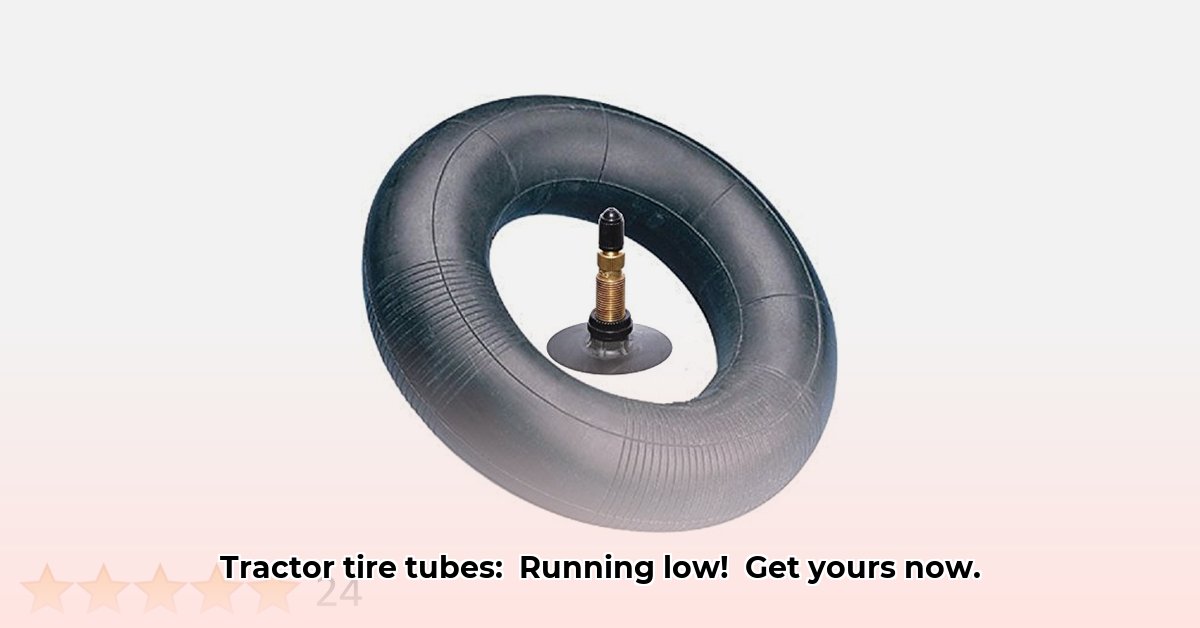
14.9-28 Tractor Tire Tube Market: A Critical Analysis
The agricultural sector currently faces a significant challenge: a shortage of 14.9-28 tractor tire tubes. This scarcity impacts farmers' planting and harvesting schedules, highlighting a critical need for immediate action and strategic planning. For more detailed specifications, see the tire specifications. This analysis examines the root causes of this shortage, assesses the associated risks, and offers actionable strategies for farmers, retailers, and manufacturers.
Market Overview: High Demand, Limited Supply
Reports from various online marketplaces and agricultural suppliers consistently indicate "low stock" warnings for 14.9-28 tractor tire tubes. While comprehensive market data is currently unavailable, preventing a precise quantification of the shortage, anecdotal evidence strongly suggests a widespread problem—not an isolated incident. The high demand during peak planting and harvesting seasons significantly exacerbates the issue. Further research is needed to accurately quantify the market size and the extent of the supply deficit. However, the current situation warrants immediate attention.
Root Cause Analysis: Unpacking the Shortage
Several interconnected factors contribute to the 14.9-28 tractor tire tube shortage:
Seasonal Demand: Peak agricultural seasons witness a surge in demand for replacement parts, including tire tubes, frequently exceeding available supply. This seasonal spike is a predictable, yet significant, contributor to the problem.
Supply Chain Disruptions: Global supply chain challenges continue to impact various industries. These disruptions, ranging from raw material scarcity to transportation bottlenecks, restrict the availability of 14.9-28 tubes.
Manufacturing Capacity: Existing manufacturing capacity might be insufficient to meet the current demand. Production limitations, whether due to resource constraints or other operational issues, contribute to the shortage.
Potential Demand Shifts: Changes in farming practices or a shift toward larger-scale farming operations could also be increasing overall demand, further stressing the supply chain.
Actionable Strategies: A Multi-Stakeholder Approach
Addressing the 14.9-28 tractor tire tube shortage requires a coordinated effort among farmers, retailers, and manufacturers.
For Farmers:
Proactive Procurement: Order replacement tubes well in advance of peak seasons to avoid last-minute shortages.
Alternative Exploration: Consult with equipment dealers to identify compatible alternative tire sizes if 14.9-28 tubes are unavailable.
For Agricultural Retailers:
Strengthen Supplier Relationships: Develop robust, long-term partnerships with reliable suppliers to ensure consistent supply.
Enhanced Forecasting: Implement advanced forecasting models incorporating seasonal demand and potential supply chain disruptions.
Diversified Sourcing: Secure multiple supply sources to minimize the impact of any single supplier's issues.
For Tire Manufacturers:
Production Optimization: Streamline manufacturing processes to increase efficiency and output.
Innovation Investment: Invest in research and development to improve tire durability and reduce the frequency of tube replacement.
Material Exploration: Investigate the use of alternative, sustainable, and cost-effective materials.
Risk Assessment: Identifying and Mitigating Challenges
The 14.9-28 tractor tire tube shortage presents several significant risks:
| Risk Factor | Likelihood | Impact | Mitigation Strategies |
|---|---|---|---|
| Supply Chain Disruptions | High | High | Diversify suppliers, build strong relationships, explore alternative transportation. |
| Increased Raw Material Costs | Medium | Medium-High | Secure long-term contracts, explore alternative materials. |
| Unexpected Demand Fluctuations | High | High | Implement robust forecasting models that consider external factors. |
Regulatory Landscape: A Proactive Approach
While current regulations don't directly cause the shortage, future regulations concerning tire safety, environmental sustainability, and international trade may significantly influence the market. Continuous monitoring of these changes is critical for proactive adaptation.
Conclusion: Collaboration and Foresight
The shortage of 14.9-28 tractor tire tubes underscores the importance of collaborative planning and proactive supply chain management within the agricultural sector. A coordinated response encompassing improved forecasting, optimized manufacturing, diversified sourcing, and robust risk management strategies is necessary to address this issue and prevent similar disruptions in the future. Continued research and engagement with industry organizations are essential for navigating this challenge effectively.